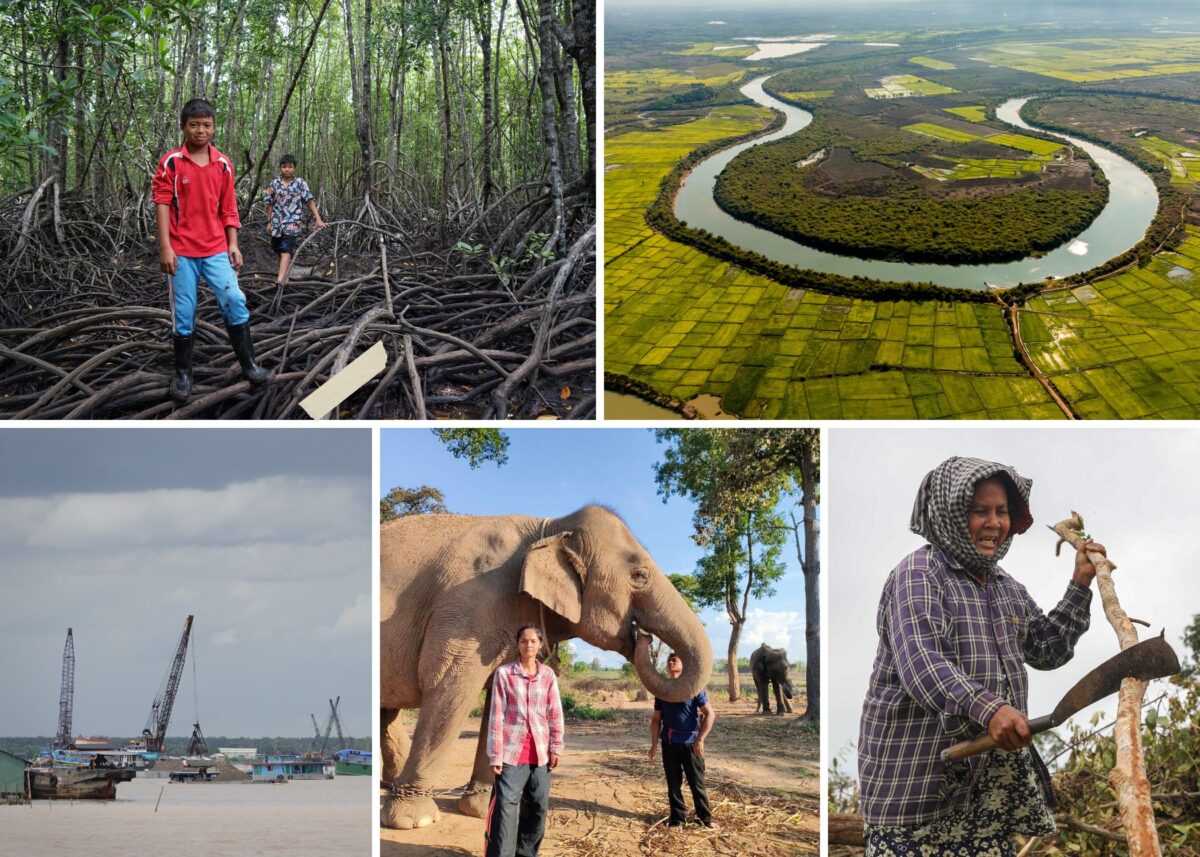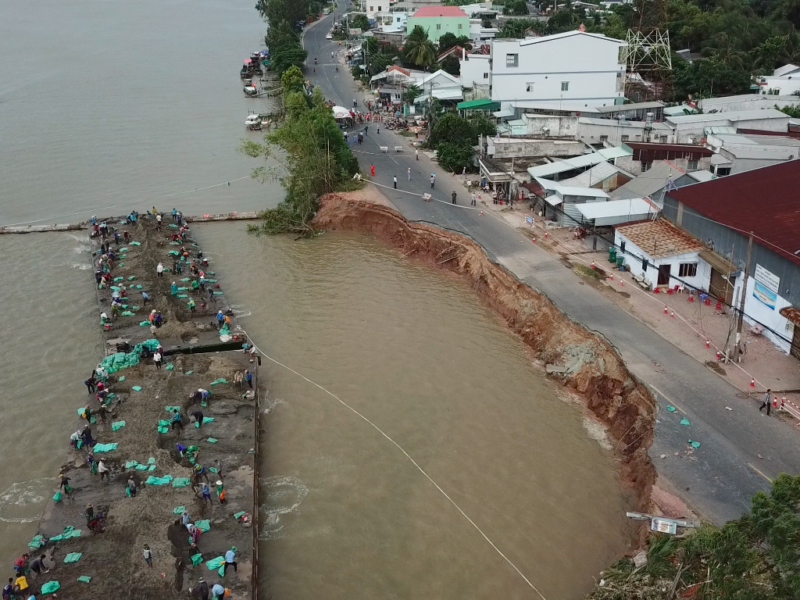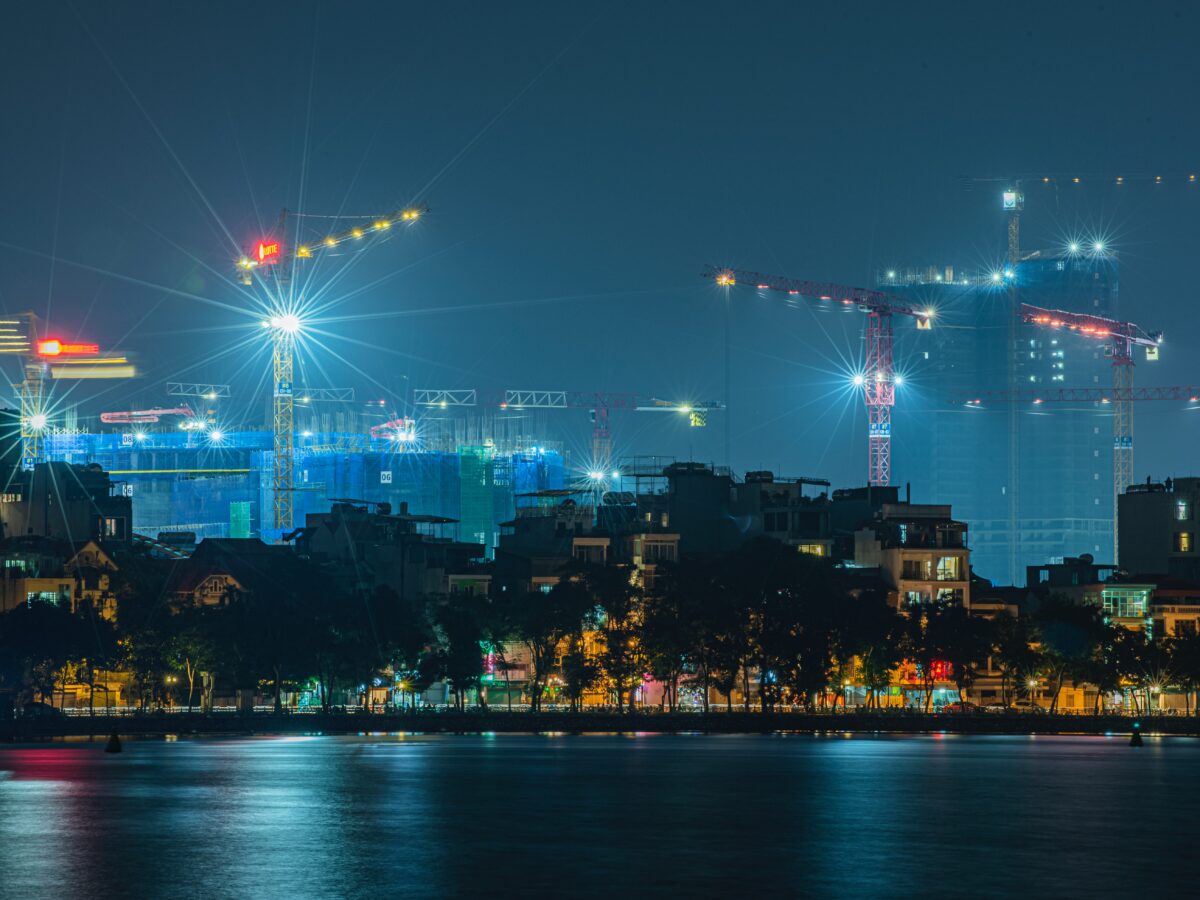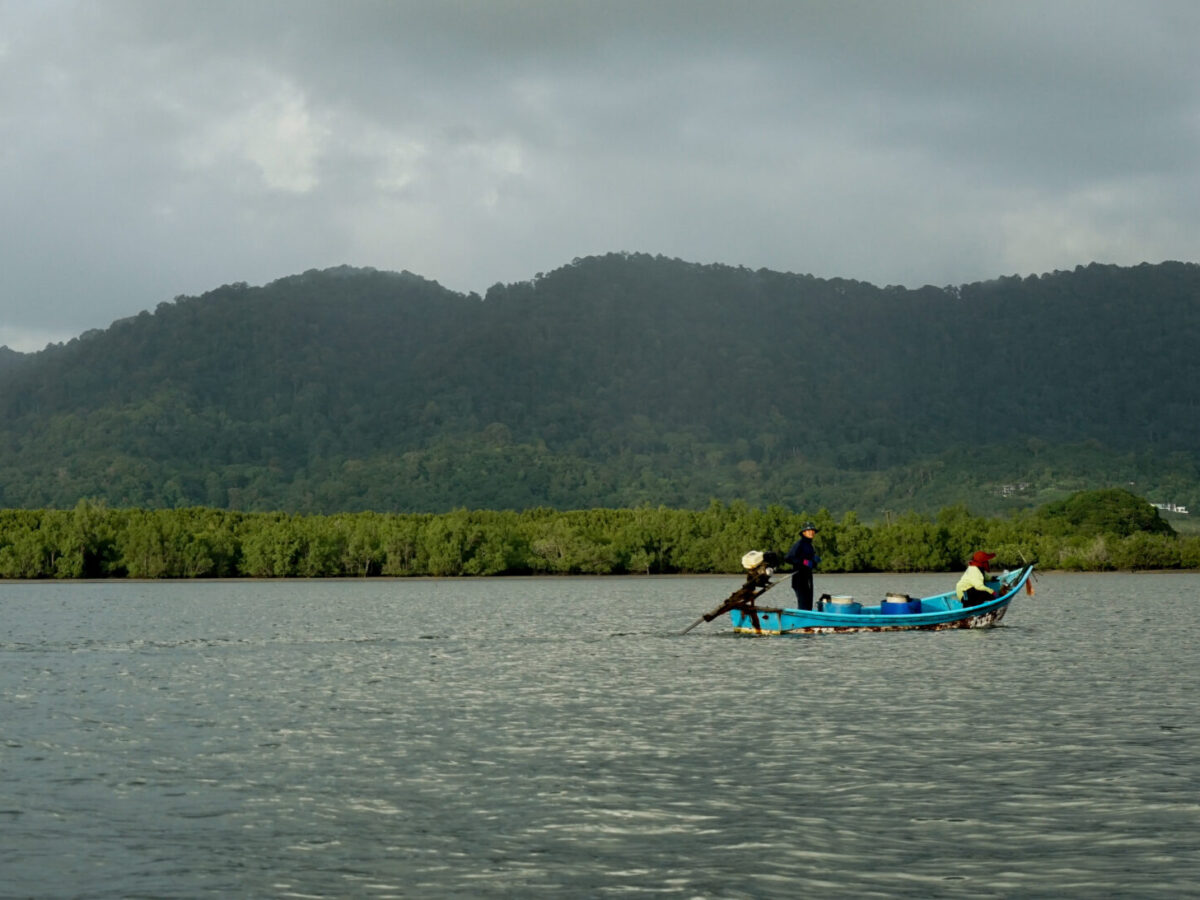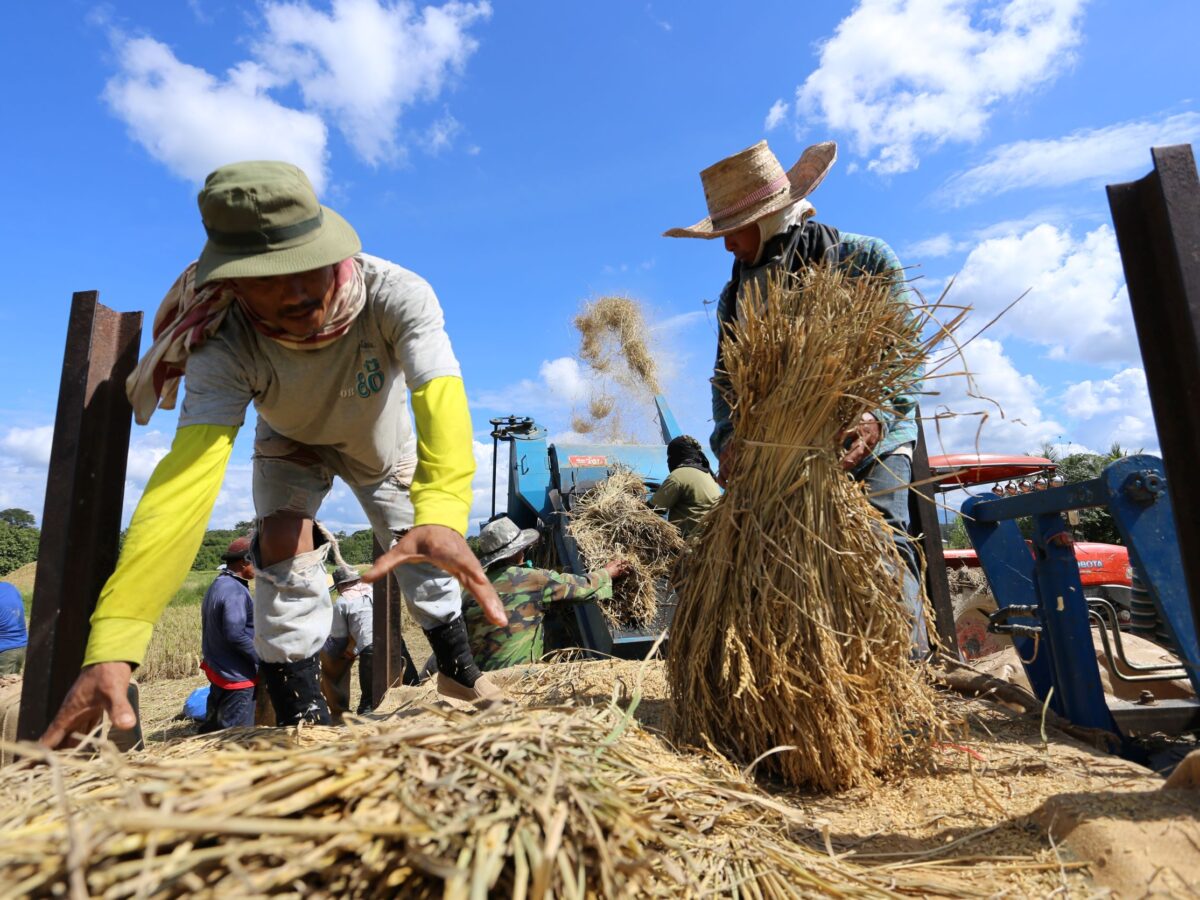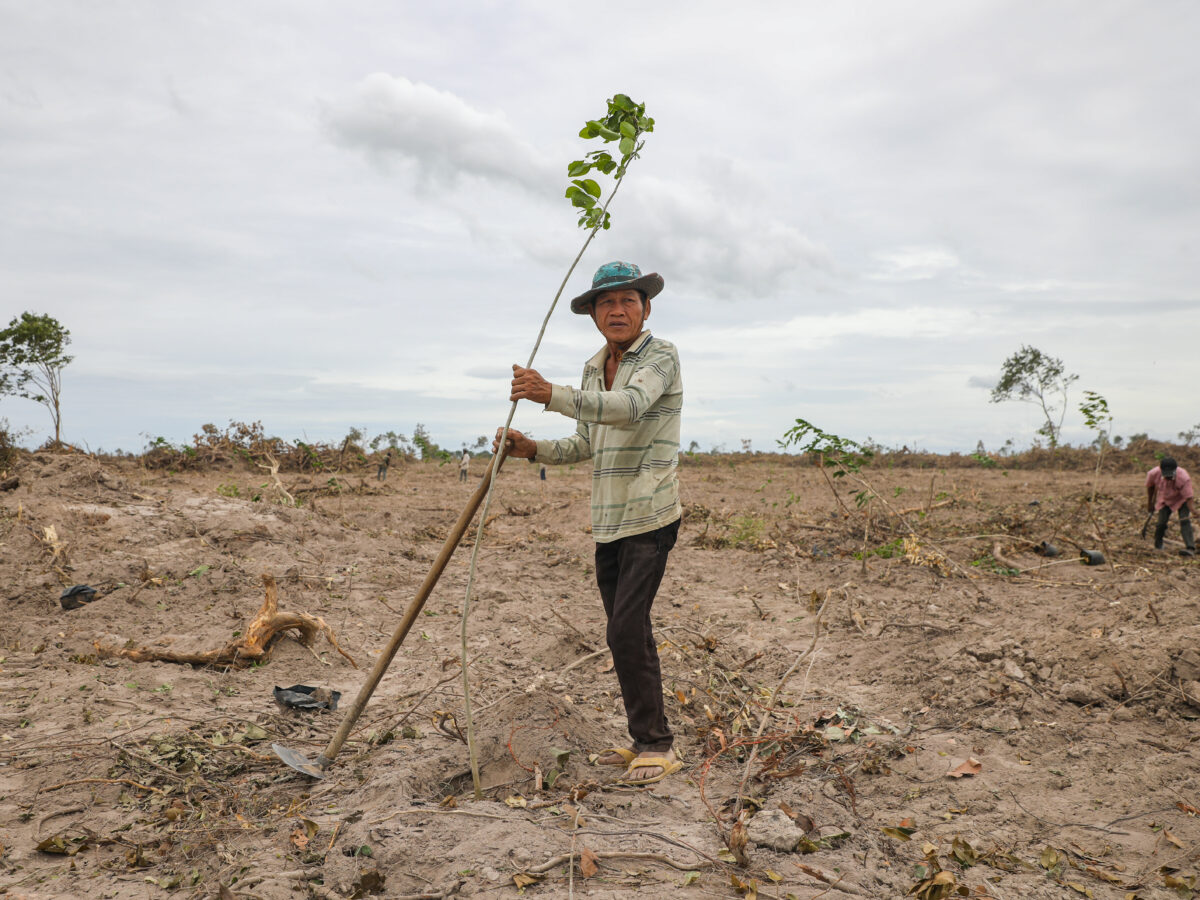Life in the Mekong region in 2022 mostly evolved around recovering from the Covid-19 pandemic, which revealed both challenges and opportunities for the environment and its people.
We witnessed controversies in many countries’ recovery plans, from Cambodia’s forest exchange program and Vietnam’s highway construction to stimulate the post-pandemic economy, to Laos’ Mekong mainstream dam projects that have moved forward.
And not to forget Myanmar, where people have struggled with an economic downturn and political turmoil due to the pandemic and the 2021 military coup.
But there were also positive moves. Thailand accelerated its efforts to promote the electric vehicle industry as a new engine for growth. Also, scientists discovered a giant stingray in the Mekong River in Cambodia, demonstrating the abundance of species under the water.
This good news showed us the potential of the Mekong countries in making choices for green and sustainable solutions, while improving their conservation efforts.
The past year also marked the first year of the new Mekong Eye team, with a new direction aimed at producing more original content that helps readers understand more about the region from local perspectives. We set a goal to create a platform for local journalists, whose collaboration with us results in many outstanding and underreported stories throughout the year.
Here are some of those stories reported by our partnered journalists and news outlets that gave us an informed look at the Mekong region during the past 12 months.
These stories also showed us the way forward in 2023, when the environment and climate change will need even more attention to ensure the region’s quality of growth, where economies, people’s well-being and sustainability coexist.
Myanmar
Myanmar’s natural resources have been aggressively exploited since the military coup in February 2021. The junta launched a bloody crackdown on civilians and frequently broke the rule of law, including the environmental protection law that regulates business activities and their environmental impacts.
Our partnered journalist Maran reported on the surge of rare earth and gold mining in Kachin State in northern Myanmar. After the coup, companies and workers flooded into this area to excavate the valuable minerals. The rampant mining raised a big question over the unsustainability of mineral supply chains, which may be associated with human rights violations and environmental damage.
In the absence of any rule of law, the illegal wildlife trade grew even more and boomed in Myanmar’s online markets. Our partnered journalist Poe Phyu Zin reported on the widespread trade in endangered wild langurs and monkeys on social media platforms such as Facebook and TikTok.
On the other hand, some foreign companies continued buying natural resource products from Myanmar after the coup. The Environmental Investigation Agency’s report showed that some US traders continued importing teak from Myanmar despite trade sanctions.
Vietnam
The year 2022 marked the start of a post-pandemic recovery and the first year of Vietnam’s pathway to realize its pledge of carbon neutrality by 2050. So it came as no surprise that some of our most important stories from the past year highlighted the environmental implications of these policy directions.
To boost economic growth, the government relied on a record high budget for infrastructure projects, especially highways. Yet the rush to complete them put Vietnam’s forests under threat, as reported by Vo Kieu Bao Uyen.
This construction boom also meant increasing pressure on Vietnam’s dwindling sand reserves, especially in the Mekong Delta, where excessive sand mining resulted in residents losing their homes and fortunes. To understand the scale of the issue, check out the investigation by Le Dinh Tuyen.
When it comes to the path to net zero, 2022 has shown that it is easier said than done. The government has yet to approve its long-delayed Power Development Plan for 2021-2030. One roadblock, as Mekong Eye editor Lam Le reported in June, was rising LNG prices just as the government eyed natural gas as a bridge fuel in its transition away from coal.
Thailand
The Covid-19 pandemic also exposed the unsustainability of some of Thailand’s tourism and raised questions over whether the Thai government and businesses would learn and change their approach in the post-pandemic era.
Thai journalist Kannikar Petchkaew reported on the poor condition of elephants in the animal tourism industry as a result of Thailand’s borders being closed during the pandemic. Some controversial projects have resumed to attract tourists, including a luxury marina project in Phuket which reporter Wanpen Pajai wrote about, highlighting a local community’s fear of losing a valued coral reef.
The Russia-Ukraine war was another crisis that directly impacted Thailand, especially Thai farmers, who must bear the brunt of skyrocketing fertilizers prices. Like farmers around the Mekong region, Thai farmers have been forced to abandon their farms or have been unable to pay their debts and lost their land due to rising prices.
This crisis added to the difficulties of Thai farmers, many of whom have already delt with climate change and had been forced to migrate to cities to seek jobs.
But there was a silver lining despite all the gloom and doom. The Thai government has accelerated its efforts to promote electric vehicles as the post-pandemic new engine of growth and as the mitigation for climate change. More Thai consumers and businesses were also looking toward alternative products to tackle climate change, including alternative meat, of which demand is rising.
Cambodia
Our partnered journalist Anton L Delgado, also the Pulitzer Center’s Rainforest Investigation Fellow, tracked Cambodia’s deforestation throughout the year.
His report on the ‘forest exchange’ plan for Phnom Tamao forest near the capital Phnom Penh exposed the Hun Sen government’s attempt to transfer a 1,180-hectare forest-protected area to private developers. Faced with public condemnation, Prime Minister Hun Sen canceled the plan and ordered tree replantation after half of the forest area was cleared. But the damage was too great to be undone.
In November, the US Attorney’s Office for the Southern District of Florida issued a statement identifying two Cambodian officials as criminal suspects for smuggling endangered long-tailed macaques from Cambodia to a US-based research facility. The Cambodian government denied any wrongdoing by its officials.
Despite all this unfortunate news, Cambodia still has the potential to improve its conservation efforts if its leaders have the political will.
In May, a 180-kilogram stingray was discovered by local fishermen, leading US scientists to believe that a significant population of the largest freshwater fish species still live under the water. Phnom Penh also prepared its first submissions for UNESCO natural world heritage and global geopark status, indicating the country’s rich biodiversity.
Laos
The Mekong mainstream dam projects in Laos moved forward significantly in the past year after the pandemic slowed down.
The $US2.4-billion Phou Ngoy dam, the proposed seventh mainstream dam north of Champassak province’s capital Pakse, was being pushed forward by the Lao government.
The Thai government also reviewed and acknowledged the draft Power Purchase Agreements for the 1,460-megawatt Luang Prabang and 770-megawatt Pak Lay dam projects – an important document that developers will use to obtain loans from banks.
These dams involve Thai and Vietnamese developers, as well as the Chinese state enterprise and South Korean construction companies. They will serve the electricity demands of Thailand and Vietnam, plus Singapore, which requires more electricity to generate growth in the post pandemic period.
The progress of the proposed Mekong mainstream dams concerns local communities who depend on the river for their livelihoods. As reported in the case of the Xayaburi dam, local communities link declining fish stocks and irregular water flows to the dam, while questioning the level of transparency in the public consultation process.
Covered image, clockwise from top-left:
1) Youths join a conservation group to plant mangrove trees in Phuket in southern Thailand. PHOTO: Wanpen Pajai
2) The riverine forestlands along the Songkhram River in Thailand’s northeastern Nakhon Phanom province. PHOTO: Visarut Sankham
3) A woman collects wood from cleared areas of the Phnom Tamao forest in Cambodia. PHOTO: Anton L. Delgado / Southeast Asia Globe 4) Lakkana Karn-in helps her mahout husband look after his two elephants. PHOTO: Supplied
5) Sand dredgers on the Hau River near My Hoa Hung islet, Long Xuyen city, An Giang province in Vietnam. PHOTO: Le Dinh Tuyen/Thanh Nien


